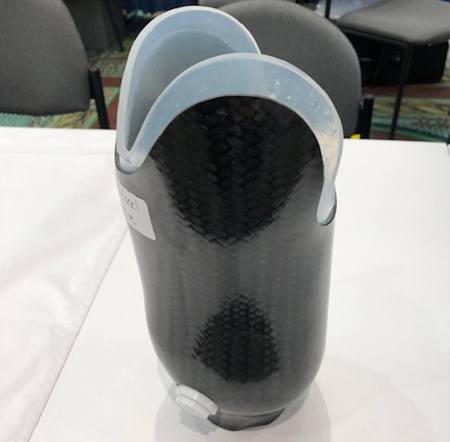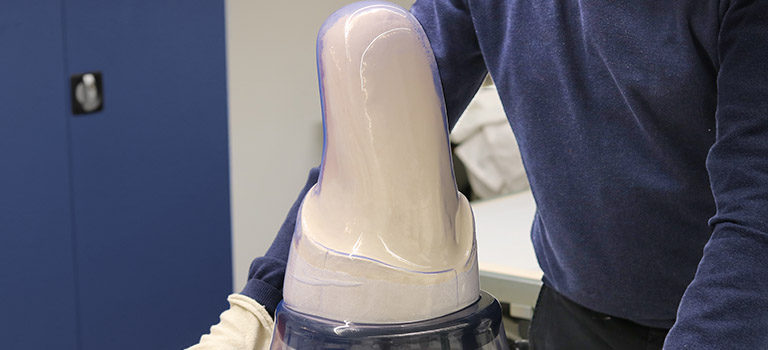
Benefits of Using a Flexible Inner Socket
Fabricating a comfortable and adaptable prosthesis
All amputees need a patient-specific approach when it comes to creating a suitable and supportive prosthetic socket.
One component that makes a prosthesis highly patient-adaptable, is a flexible inner socket. And while it is not used in all instances, a flexible inner socket can have numerous benefits for the patient.
Read along and discover some great advantages of using a flexible inner socket.
1. A flexible inner socket supports muscle activity

A flexible inner socket is ideal for patients with high muscle definition. The flexible material will conform to the muscle shape and allow increased muscle movement. It is also possible to create windows in the socket, which permit greater flexibility over the muscular areas.
Because the residual limb is contained in a flexible or semi-flexible way and allows muscle activity, the patient will have more control over the prosthesis.
Flexible thermoplastic sheets come in different degrees of rigidity to offer each patient a custom and comfortable fit, which accommodates to their unique anatomy and daily activities. Flexible materials (e.g. Orfitrans Extra Soft) are ideal for patients with high muscle strength and who have an active lifestyle. More rigid materials (e.g. Orfitrans Medium Soft) could be used for patients who need more support.
2. Easy donning and doffing
The flexible inner socket makes it easier for the patient to don and doff the prosthesis. The flexible socket is easily pulled off the residual limb, compared to taking off a tight and firm rigid socket.
We also offer sheet materials that contain a carefully chosen amount of silicone (Orfitrans Extra Soft Silicone), to make the surface of the socket very smooth. This helps the patient to easily take off their socket.
3. A flexible inner socket ensures greater wearing comfort

The inner socket forms a soft barrier between the residual limb and the firm material of the outer socket.
It also prevents uncomfortable contact with the hard edge of the outer socket, as the edges of the inner socket are a little longer.
Thanks to the different thicknesses available in the socket materials, it is possible to adapt the socket to your patient’s needs and to offer them the comfort they need.
An added benefit is that the reduced thickness of the flexible lining material helps to dissipate the heat a lot quicker.
4. It is easier to adjust the circumference of the socket
The use of a thermoplastic inner socket allows you to adapt the socket in case there are any volume changes in the residual limb.
Note: Keep in mind that the choice for thermoplastic material is highly dependent on the patient’s anatomy and needs. Evaluate your patient carefully before fabricating any prosthetic socket.
Need some tips for molding excellent Orfitrans inner sockets? Read our step-by-step fabrication guide for helpful tips and tricks or watch our prosthetic socket fabrication video.
![]()

Written by Marc Blij
Marc studied in Brussels and London and is a Certified Orthotist and Prosthetist.
After working in an O&P lab at the Universities of Louvain and Brussels, he decided to set up his own O&P lab in Antwerp. For over 30 years, he ran his own practice, together with his wife.
Since 2006, Marc works at the Orfit Industries headquarters in Wijnegem (Belgium) as a Product and Educational Specialist in Orthotics & Prosthetics and Physical Rehabilitation.
![]()
If you’d like to receive the latest product updates and interesting Orfit news, subscribe to our newsletter:



